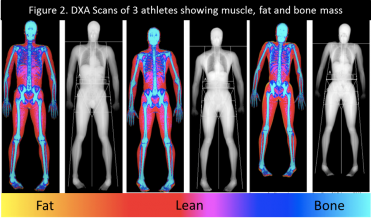SPRING 2015 VOLUME 7 ISSUE 1
Editorial Welcome
Keith Ward
Reference measurements of elite judokas' body composition
Adam Hawkey
Measuring elite athletes' body composition: A case study evaluating analysis techniques
Adam Hawkey, Jarryd Dunn, Michelle Di Benardo, Kerry Matthews and Alan Parsons
Raising heel height alters pressure variables in experienced high-heel wearers
Adam Hawkey and Isabel Gardiner
Body position affects cycling comfort, performance, and overuse injury: A review of the relevance of discipline-specific body positions
Nicholas J. Dinsdale and Nicola J. Dinsdale
Learning and teaching strategies for Sports Therapy: Active learning (problem-based and team-based)
Mark Godwin
Journal of Sports Therapy 2015
Keith Ward

Editorial Welcome
by Keith Ward
For this issue we present five new and interesting articles. Adam Hawkey provides our Guest Editorial feature regarding the reporting of competitive judokas’ body composition using Dual-Energy X-ray Absorptiometry. Adam is also the lead author on two of our other articles – one a case study comparing body composition measurement techniques in elite athletes, the other an original piece of research examining how changes in heel-height alter pressure distribution in females in a series of gait experiments. For our fourth article, father and daughter Graduate Sports Therapists Nick and Nicola Dinsdale have presented an informative article examining the effect of cycling position on the rider’s comfort, performance, and potential for injury. This review particularly scrutinises the relationship between ‘man/woman and machine’. Sarah Catlow and colleagues from University of St. Mark and St. John (Marjon) in Plymouth have provided a useful addition to the gathering literature surrounding kinesiology tape and its efficacy. The authors have examined the relationships existing between the tape, anatomical fascial chains and resulting flexibility. Finally, Mark Godwin argues the case for more consideration of and investment into the use of problem-based and team-based learning strategies in sports therapy educational settings.
Reference measurements of elite judokas’ body composition
by Adam Hawkey
Regulations of the International Judo Federation (IJF) and International Olympic Committee (IOC) require athletes to compete in set weight categories. As a result, judokas demonstrate relatively low levels of body fat with high strength to mass ratios. However, previous studies, which have reported lower levels of body fat in Olympic competitors compared to other level performers, have analysed body composition utilising methods such as skinfold thickness and bioelectrical impedance, which are less accurate than ‘gold standard’ analysis techniques such as dual-energy x-ray absorptiometry (DXA: Hawkey, 2012). Judokas regularly reduce weight pre-competition to obtain a competitive advantage over lighter opponents. Crucially, this is often achieved using a number of aggressive nutritional strategies, which place the judoka at a high risk of injury and/or health complications, and can also limit performance. Effectively quantifying judokas’ body composition, using advanced equipment with up-to-date software and reference data, is therefore fundamental to monitoring the training, health and performance of the judoka. We recently analysed the body composition of twelve (n=12) elite judokas (mean: age = 19 ± 1.5 yrs.; height = 1.7 ± 0.1 m; mass = 71.5 ± 16.4 kg), from the Great Britain Judo Centre of Excellence, as part of their regular health and performance monitoring. Judokas’ bone mineral content (BMC), bone mineral density (BMD) and corresponding Z-Score, lean + BMC, % body fat, and visceral adipose tissue (VAT), was assessed on a Hologic Discovery W machine, using the National Health and Nutrition Examination Survey (NHANES) reference data.
Measuring elite athletes’ body composition: A case study evaluating analysis techniques
by Adam Hawkey, Jarryd Dunn, Michelle Di Benardo, Kerry Matthews and Alan Parsons
The effective monitoring of athletes’ health and performance is becoming increasingly important. One example of this is in the use of body composition measures to monitor levels of body fat, muscle mass and bone mass. These factors can all be useful when assessing training loads, rehabilitation and recovery, and the general health and wellbeing of the athlete. While the ‘gold standard’ of body composition measurement involves the use of dual-energy x-ray absorptiometry (DXA), other techniques such as skinfold anthropometry (SFA) and bioelectrical impedance anthropometry are widely used; due to their relative low cost and ease of operation. The purpose of this current small-scale case study was to assess the comparability of a range of techniques frequently used to assess body composition in an elite athletic population.
Raising heel height alters pressure variables in experienced high-heel wearers
by Adam Hawkey and Isabel Gardiner
High heels are worn by millions of women every day in both professional and social settings. Despite high heels being used prolifically, research examining the effects of different heel heights on gait patterns is limited. The current study investigated how changes in heel-height alter pressure distribution.
Body position affects cycling comfort, performance, and overuse injury
by Nicholas J. Dinsdale and Nicola J. Dinsdale
Improvements in cycling performance have focused predominately on physiological variables and training strategies. In contrast, few studies have investigated the effects and implications of body position. Body position, especially discipline-specific, can affect comfort, performance and incidence of overuse injury – over the range of cycling disciplines. This review investigates the link between body position with respect to cycling comfort, performance, and overuse injuries. Moreover, this review scrutinises the relationship between ‘man and machine’.
Learning and Teaching Strategies for Sports Therapy: Active learning
by Mark Godwin
Sports therapy is a branch of healthcare that utilises areas of sports medicine and sport and exercise sciences. Students study in both clinical and non-clinical settings covering a wide range of topics including anatomy and physiology; biomechanics; sports massage; clinical practice; strength and conditioning; rehabilitation. Currently, there are no peer-reviewed articles which have specifically looked at learning and teaching strategies in this field. This paper explores methods of learning and teaching from disciplines of medicine, sports medicine and sports science which may be implemented into sports therapy curriculum design.
Journal of Sports Therapy 2015
by Keith Ward
Editorial board 2015

